Regulatory Motifs and Signal Transduction
1/47
There's no tags or description
Looks like no tags are added yet.
Name | Mastery | Learn | Test | Matching | Spaced |
|---|
No study sessions yet.
48 Terms

one linear pathway signal curve
one linear pathway features
linear, graded, reversible
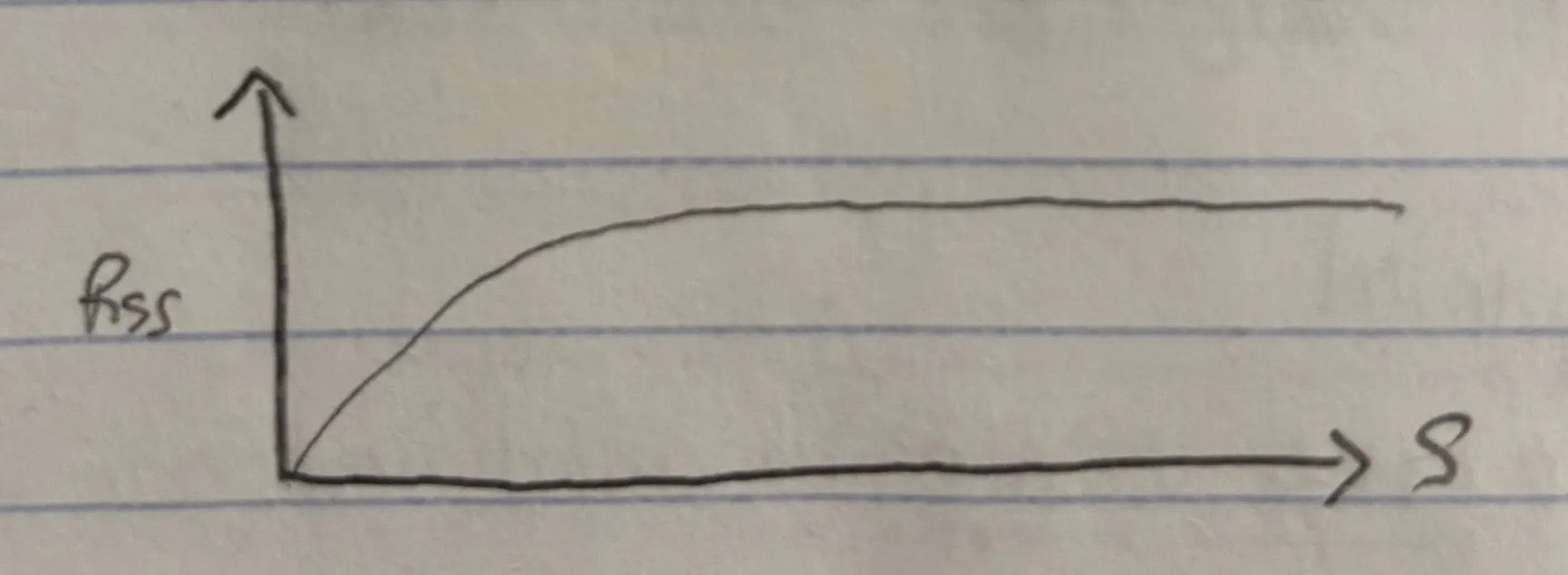
one loop mass-action kinetics signal curve
one loop mass-action kinetics features
graded to a point
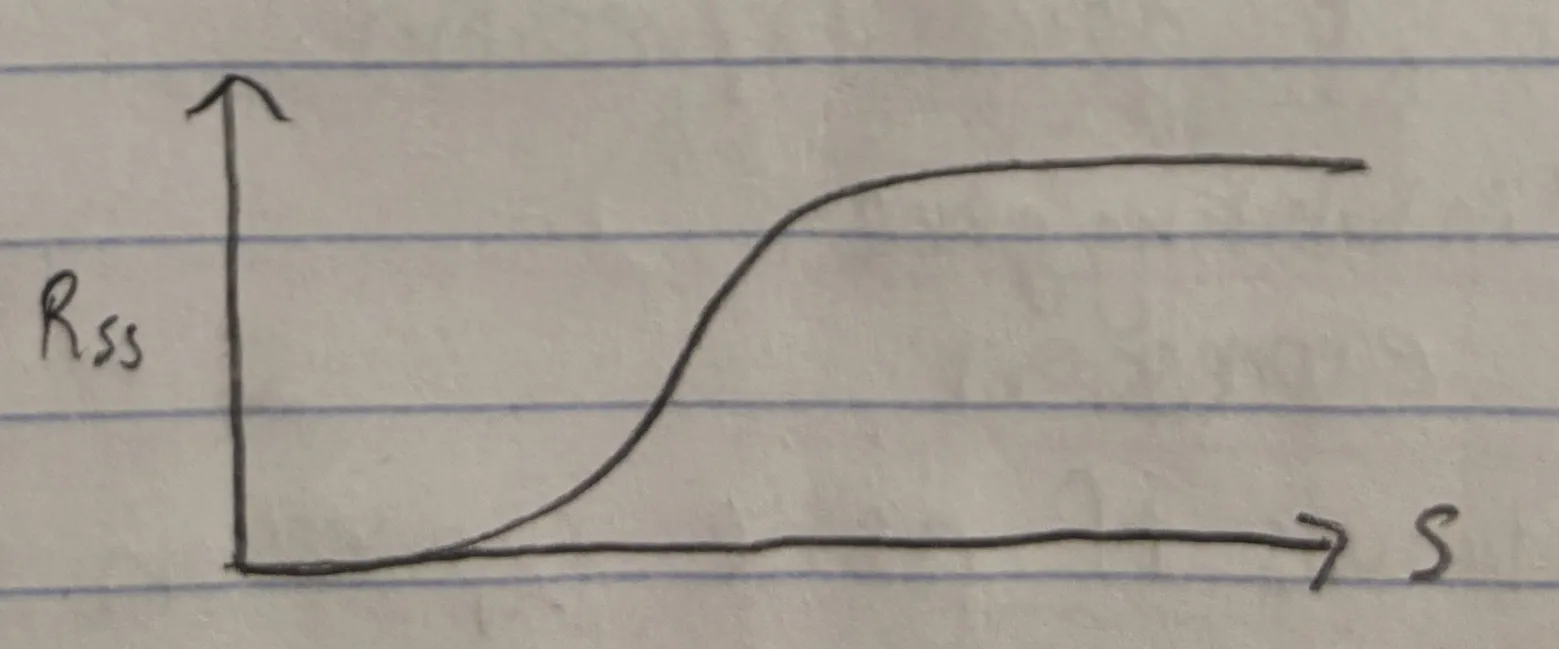
one loop michaelis-menten kinetics signal curve
one loop michaelis menten kinetics features
sigmoidal response, graded, reversible, all or none
one loop michaelis menten kinetics nickname
buzzer

2 linear pathways signal curve
2 linear pathways features
SS response is independent of S
2 linear pathways nickname
sniffer
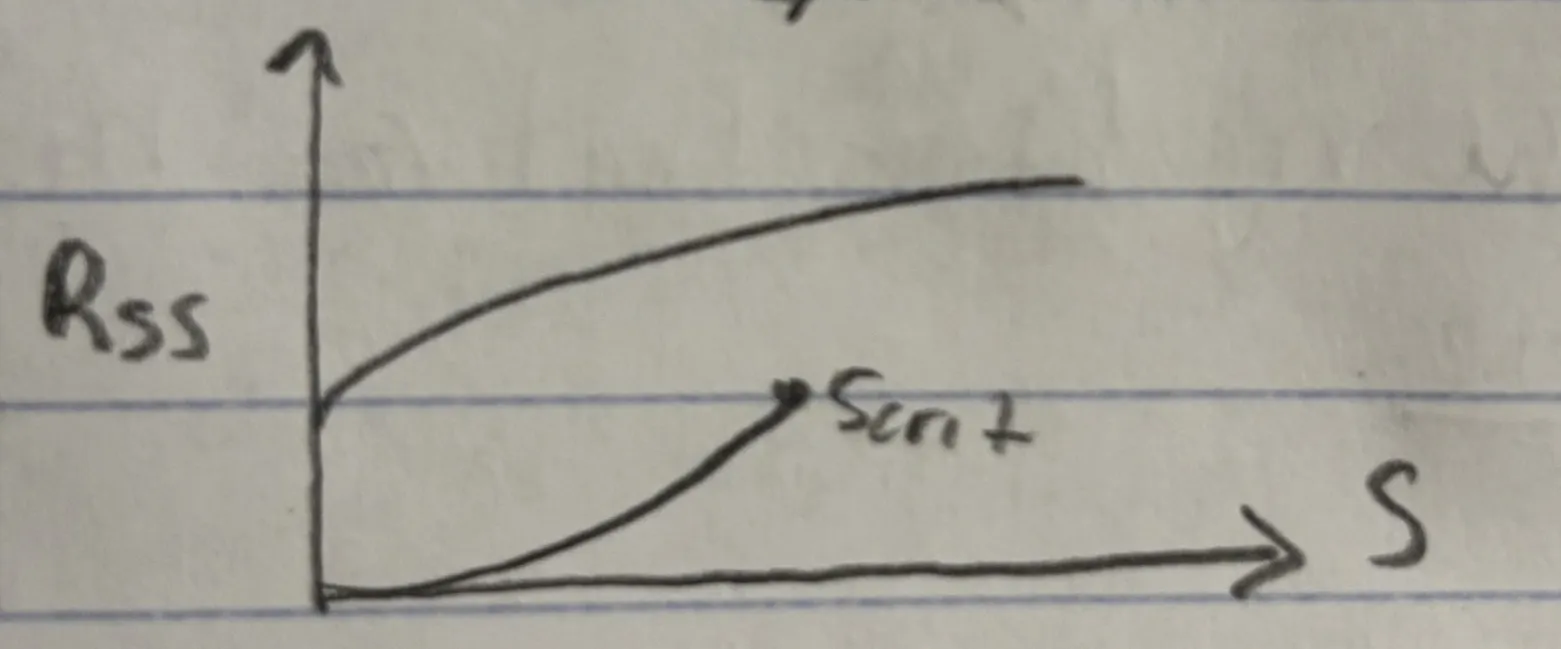
positive feedback mutual activation signal curve
positive feedback mutual activation features
irreversible, discontinuous, 1-way switch
positive feedback mutual activation examples
development, apoptosis

positive feedback mutual antagonism signal curve
positive feedback mutual antagonism features
discontinuous, 2-way switch
positive feedback mutual antagonism nickname
toggle
positive feedback mutual antagonism examples
excited neuron states, cell cycle transitions
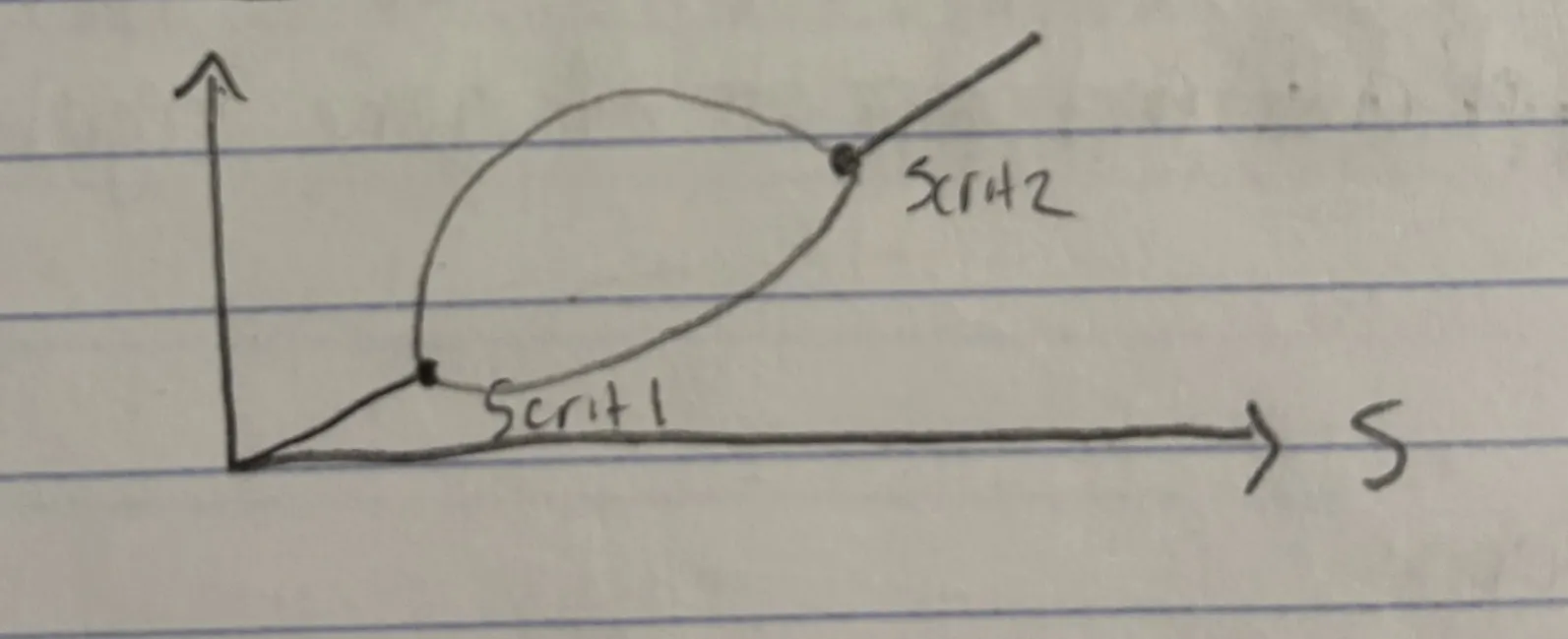
negative feedback oscillator signal curve
negative feedback oscillator features
oscillation between Scrit1 and Scrit2
negative feedback oscillator nicknames
blinker
signal transduction reactions are _ and _
reversible, enzyme-catalyzed
reaction equation for signal transduction
L + R ↔ LR
two component system (TCS) definition
contains sensor and regulator, transfers phosphate groups between substrates without consuming ATP
TCS is found in _
lower organisms
phosphate transfer is also known as
phosphotransfer or phosphorelay
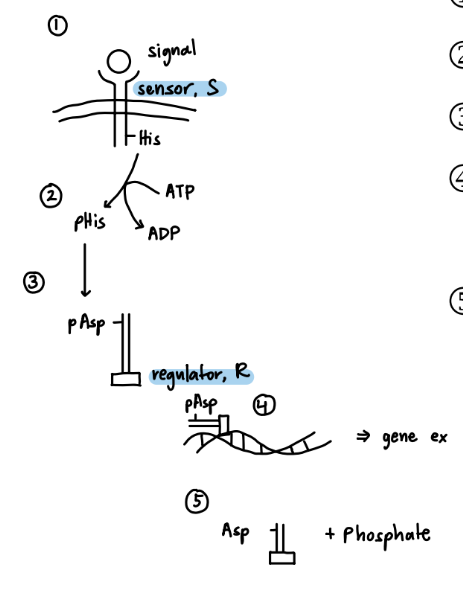
TCS diagram
2 variants of TCS
monofunctional sensor and bifunctional sensor
monofunctional sensor
dephosphorylation of R is independent of S

monofunctional sensor diagram
bifunctional sensor
dephosphorylation of R is enhanced by S
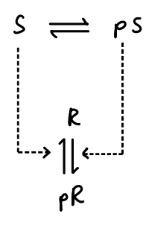
bifunctional sensor diagram
bifunctional TCS can exhibit _
bistability
TCS dose response curve can exhibit _
hysteresis
G-proteins bind _
guanine nucleotides
G-proteins are _
heterotrimeric, 3 distinct subunits
G proteins associate with _
cell surface receptors, GCPRs
G-proteins are found in _
higher organisms
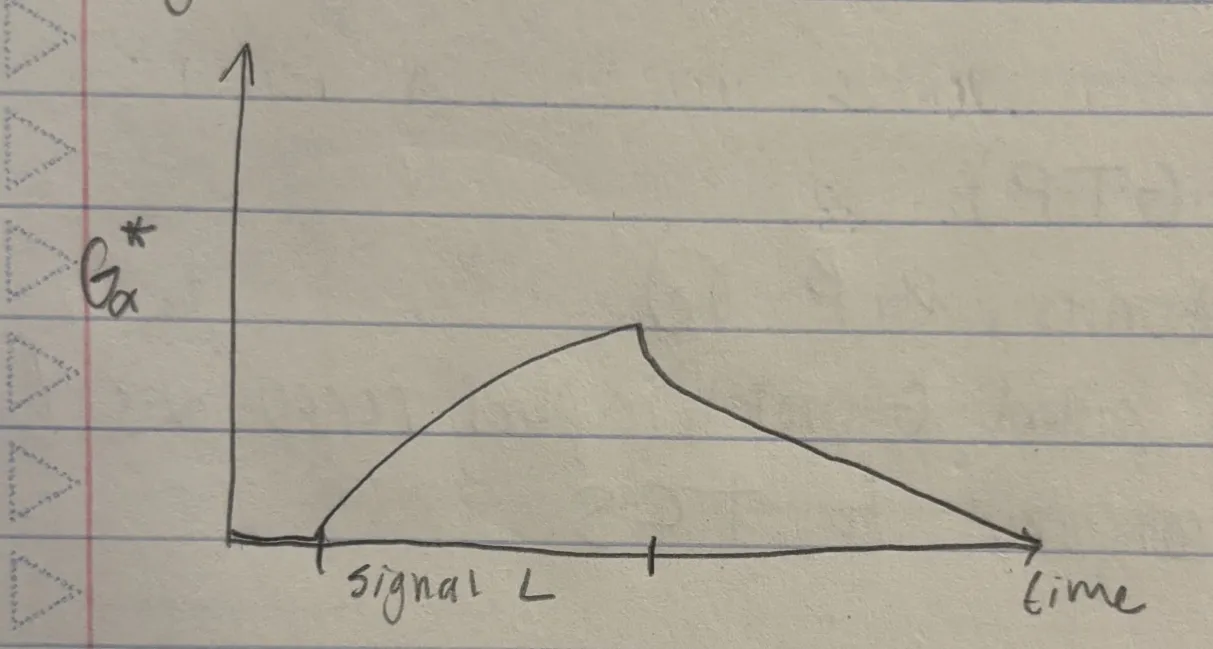
G-protein dynamics
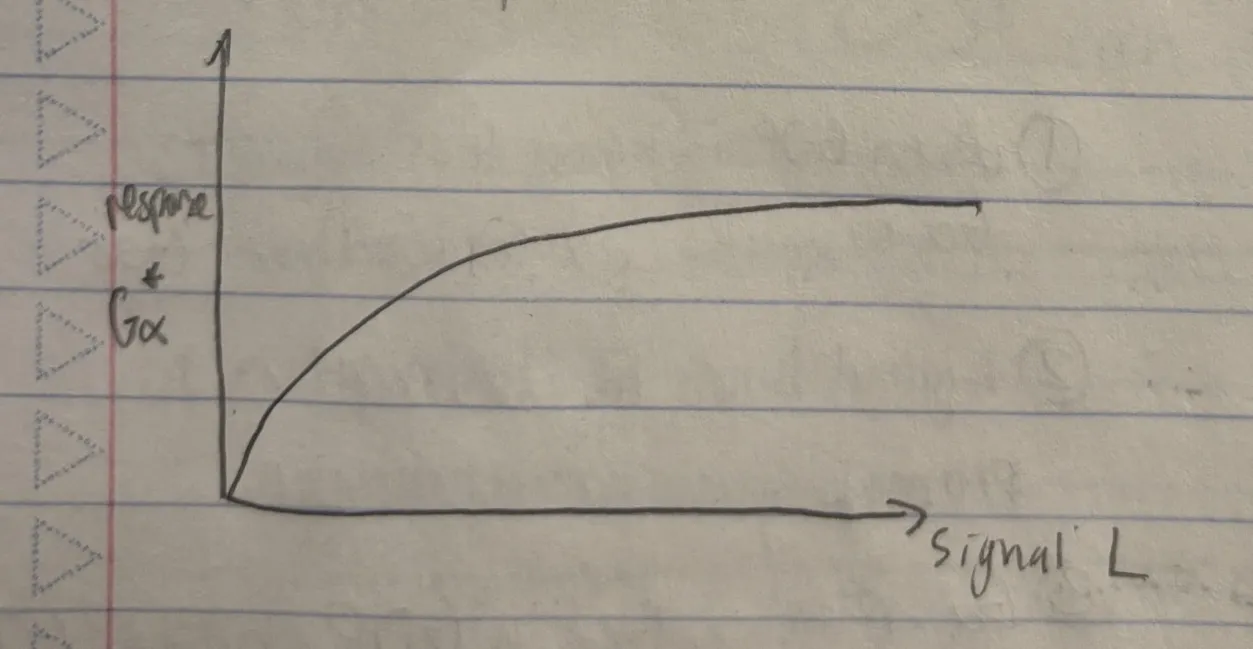
G-protein dose-response curve
the dose curve for ultrasensitivity is _ and _
steeper, more sigmoidal
mapk stands for _
mitogen-activated protein kinase
mapk cascade has _ layers
3
mapk cascade is _
conserved across several species
mapk cascade has been shown to allow _
better signal amplification, reduction in impact of noise, robust transduction of signal
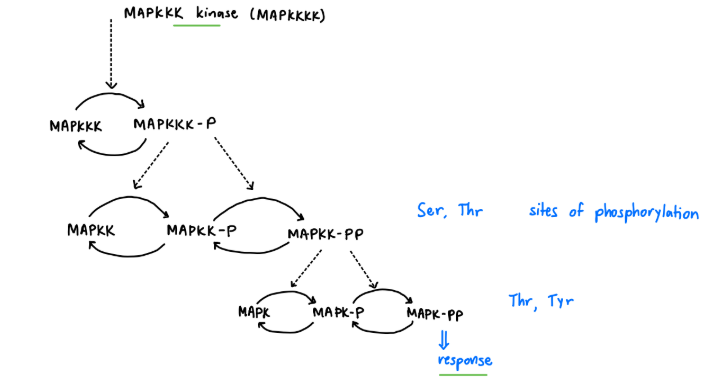
mapk cascade
dynamics of mapk cascade
exhibits nonlinear amplification of input signal with a steeper response for each layer of the cascade
linear
proportional to input signal
graded
positive relationship